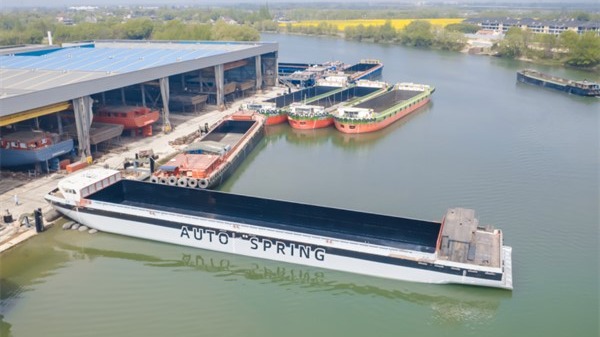China's Inland Waterway Shipping Sector Embraces Green Energy Revolution
Key Ideas
- China is leading the way in transitioning inland waterway vessels to alternative power sources like LNG, battery, methanol, and hydrogen, aligning with global environmental concerns.
- With over 1,000 ships using alternative fuels by the end of 2024, China is actively reducing carbon emissions and protecting waterways like the Yangtze River.
- The country aims to further promote the use of battery-powered technology for small and medium vessels, while encouraging LNG and methanol technologies for larger vessels on inland waterways.
- Efforts also include developing stronger refueling facilities for new energy vessels, promoting near-zero carbon terminals, and utilizing wind and solar power in ports.
In China, the inland waterway shipping sector is undergoing a significant shift towards green energy solutions to address environmental concerns. Vice-Minister of Transport, Fu Xuyin, highlighted the progress made, with a focus on the adoption of liquefied natural gas (LNG), battery, methanol, and hydrogen fuel power sources in vessels. By the end of 2024, China already had over 1,000 ships using alternative fuels, with a majority being LNG-powered and battery-powered vessels. This transition has not only helped reduce carbon emissions but also set new benchmarks for sustainable maritime practices. Electricity consumption by vessels along the Yangtze River Economic Belt notably resulted in a substantial reduction of carbon dioxide emissions, showcasing the positive impact of these initiatives. With China's inland freight volume on the rise, the country is dedicated to promoting eco-friendly shipping practices through the continued adoption of new energy sources like batteries, LNG, and methanol. The emphasis is on smaller vessels utilizing battery power for short distances and larger vessels opting for LNG and methanol technologies for medium to long-distance transport. Additionally, plans include enhancing refueling facilities, promoting near-zero carbon terminals, and integrating renewable energy sources like wind and solar power in ports. The focus on sustainability extends to port machinery and transportation tools, with a shift towards new energy and clean energy sources, along with the utilization of railways and new energy trucks for bulk cargo transport.
Topics
Power
Sustainability
Carbon Emissions
Transportation
Green Energy
Alternative Fuels
Maritime Industry
Energy Technology
Shipping Sector
Latest News
